Posted: September 9th, 2014 | 1 Comment »
A recent trawl by the RAS Shanghai librarians turned up a list of Honorary Members of the North China Branch for 1909…but who were these people?
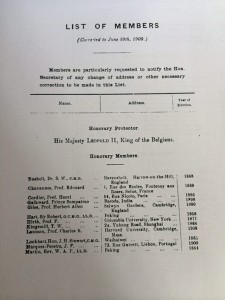
The Honorary Protector (a post that sadly no longer exists) was held by His Majesty Leopold II, King of the Belgians (a post now held by His Majesty King Philippe). Not sure Leopold did very much as Honrary Protector as he died in December 1909. Leopold II has gone down in history rather infamously as best known for his rather horrific imperialist exploits in the Congo. Belgium was a treaty port power so he had a foothold in China and, apparently, a taste for Chinoiserie and the Far East. At the Royal Palace of Laeken he included a Japanese Tower and a Chinese Pavilion in the grounds. He did visit China shortly before his accession to the throne in the early 1860s. He was a keen investor in China, believing in railways. According to Adam Hochschild’s excellent book King Leopold’s Ghost, ‘In 1897, Leopold began investing in a railway in China, seeing China as “a feast to be consumed, and he was as ready as ever to invite himself to the table†He said of the Chinese railroad route he wanted to get: “This is the spine of China; if they give it to me I’ll also take some cutlets’â€
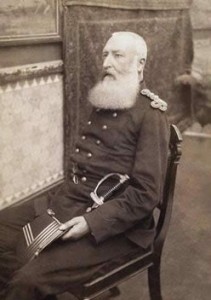 And what of the Honrary Members?
And what of the Honrary Members?
Well, Dr. S.W. (Stephen Wootton) Bushell was not likely to be attending any meetings as he had died in September 1908. Bushell, resident in England at the time anyway, was a specialist in Chinese ceramics, numismtaics and deciphering Tangut script. In January 1868, at the recommendation of Dr William Lockhart, Bushell was offered a position as physician to the British Legation in Peking, with an annual salary of £600 and the promise that he could also engage in private practice if he wished. He set sail for Shanghai on the last day of the next month, and except for a few periods of leave, he remained there for the next 32 years.He had eturned to England in 1900, due to ill-health. In autumn 1872, Bushell and Thomas G. Grosvenor (1842–1886), a secretary at the British Legation, went on a journey beyond the Great Wall to Mongolia, and visited the ruins of Shanghdu, the fabled summer capital of the Yuan. They were the first Europeans to visit Shangdu since the time of Marco Polo. He was appointed a Chinese ceramics collector for the V&A in London while most of his personal collection was left to the British Museum.
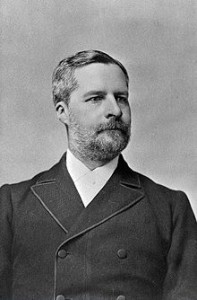
Edouard Chavennes was a French Sinologist who specialised in the history of religion in China. He was a leading light in the second wave of formal Sinologists in France. After studying Chinese in Paris, Chavannes obtained a position as an attaché to a scientific mission associated with the French Legation in Peking in January 1889. Chavannes stayed in China until 1893, when he returned to France to take up the position of Professor of Chinese at the Collège de France. He died in 1918 at the young age of 52.

Professor Henri Cordier had been one of the French Sinologists that inspired Chavennes to study Mandarin. A self declared Orientalist, Cordier became the President of Paris’s Geographic Society. In 1869 at age 20, Cordier sailed for Shanghai, where he worked at an English bank. During the next two years, he published several articles in local newspapers. In 1872, he was made librarian of the North China branch of the RAS. In this period, about twenty articles were published in Shanghai Evening Courier, North-China Daily News and the Journal of the North China Branch of the Royal Asiatic Society. In 1876, he was named secretary of a Chinese government programme for Chinese students studying in Europe. Later Cordier returned to France and was appointed a professor at l’École spéciale des Langues orientales. He died in 1925.

Sampatrao Gaekwad is a somewhat different character – the son of Sayajirao Gaekwad III, the Maharaja of Baroda, and therefore making him a prince. His achievements included being one of the men who established the Bank of Baroda, now one of India’s Big 4 banks. He died in 1935
Professor Herbert Allen Giles is no surprise on the list – I don’t think China Rhymers need an exhaustive biography of Giles – British diplomat in China (at Shanghai and Ningpo) and Formosa (at Tamsui – see my post from 2009 on his former residence in Taiwan), Professor of Chinese at Cambridge (only the second ever appointed), writer of numerous studies and, of course, the Chinese-English Dictionary and the Wade-Giles system which has given many authors on China long hard arguments with their editors!! He made it 89 and died in 1935.

Sir Robert Hart – I’m going to hold back on the old “IG” too as everyone who visits China Rhyming regularly knows that old Ulsterman and the scion of the China Maritime Customs.
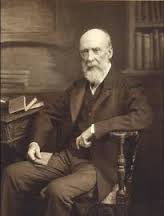 Professor Friedrich Hirth is a new one on me though – A German-American Sinologist who served (under Hart) in the Maritime Customs before becoming Professor Chinese at Columbia University in 1902. He died in Munich in 1927.
Professor Friedrich Hirth is a new one on me though – A German-American Sinologist who served (under Hart) in the Maritime Customs before becoming Professor Chinese at Columbia University in 1902. He died in Munich in 1927.

Sadly Mr T.W. Kingsmill has slightly slipped from history too though was living on Yuhang Road (now Dongyuhang Road) in Shanghai at the time and had been an early President of the RAS North China branch. Kingsmill was a classical scholar (ancient Persia and all that) but wrote rather a lot on China and especially for the RAS Northern China branch Journal, an article on ” The Border Lands of Geology and History,” in 1877 for instance, the identity of the Hiung-nu with the Huns of Europe – that sort of thing. A German Sinologist recently commented – “we know little about the emotional life of T.W. Kingsmill (a.k.a., Jin Simi 金斯密, 1837-1910), British pioneer geologist, indefatigable NCBRAS [North China Branch of the Royal Asiatic Society] architect, prolific amateur sinologist, Daodejing translator and long term Shanghai resident…” Sadly Kingsmill died in 1910.
Of Professor Charles R Lauman of Harvard University I know even less I’m afraid. A long-time Harvard man I believe, a member of the American Philological Society in the 1870s and 1880s, but sadly no more!
John Stewart Lockhart of Weihaiwei has, of course, featured on this blog many times and so I Won’t go into too much detail – a British colonial official in Hong Kong and China, Commissioner of Weihai between 1902 and 1927, founded the Hong Kong Football Club and returned to London to be involved with the RAS in England. He died in 1937, aged 79.

J. F. Marques Pereira is an interesting character and a great historian of Macao and the Portuguese presence in Asia. His A questão do Extremo-Oriente e a missão portugueza á China was a classic on the subject.
And finally, the Reverend William Alexander Parsons Martin, aka Ding Weiliang, American Presbytarian missionary resident in Peking and a translator of many works (many legal) from English into Chinese and served as interpreter for the United States minister William B. Reed, in negotiating the treaty of Treaty of Tientsin in 1858. He was also occasional translator to America’s Ambassador Ansom Burlingame. He was reputed to be the first foreigner to make the journey from Beijing to Shanghai on the Grand Canal of China (I once tried that and gave up south of Suzhou!!), and described the trip in the “Journal of the Asiatic Society” in 1866. He died in Peking in 1916.

And that, ladies and gentlemen, is your Honorary Protector and Honorary Members of the Royal Asiatic Society North China Branch for 1909….
Posted: September 8th, 2014 | No Comments »
A visit to the Pitt Rivers in Oxford last week – I love the architecture and the really big bugs. REminded me that the Curator for Asian Collections at the Pitt Rivers Museum, Dr Clare Harris, is also the author of The Museum on the Roof of the World, an excellent recent book I haven’t noted on this blog previously. The book did win the 2013 E. Gene Smith Inner Asia Book Prize so I should have stuck it up here – anyway, better late than never….

For millions of people around the world, Tibet is a domain of undisturbed tradition, the Dalai Lama a spiritual guide. By contrast, the Tibet Museum opened in Lhasa by the Chinese in 1999 was designed to reclassify Tibetan objects as cultural relics and the Dalai Lama as obsolete. Suggesting that both these views are suspect, Clare E. Harris argues in The Museum on the Roof of the World that for the past one hundred and fifty years, British and Chinese collectors and curators have tried to convert Tibet itself into a museum, an image some Tibetans have begun to contest. This book is a powerful account of the museums created by, for, or on behalf of Tibetans and the nationalist agendas that have played out in them.
Harris begins with the British public’s first encounter with Tibetan culture in 1854. She then examines the role of imperial collectors and photographers in representations of the region and visits competing museums of Tibet in India and Lhasa. Drawing on fieldwork in Tibetan communities, she also documents the activities of contemporary Tibetan artists as they try to displace the utopian visions of their country prevalent in the West, as well as the negative assessments of their heritage common in China. Illustrated with many previously unpublished images, this book addresses the pressing question of who has the right to represent Tibet in museums and beyond.
About the Author
Clare E. Harris is a reader in visual anthropology at the School of Anthropology and Museum Ethnography at the University of Oxford, curator for Asian collections at the Pitt Rivers Museum, and a fellow of Magdalen College, Oxford. She is the author of In the Image of Tibet: Tibetan Painting after 1959.
Posted: September 7th, 2014 | No Comments »
I’ll be up at the Wigtown Book Festival in Scotland in October talking Midnight in Peking…booking is now open and it loos like being a fantastic festival….

Paul French
Midnight in Peking
County Buildings, Main Hall
Friday 3rd October 2014
18:00
In 1937 Peking, the teenage daughter of a British consul was murdered. As war loomed, British and Chinese authorities closed ranks. Seventy-five years later, Paul French has uncovered a stash of forgotten documents revealing the killer’s identity. He discusses his gripping account of what happened, a New York Times Bestseller and BBC Radio 4 Book of the Week.
Tickets here
Wigtown’s main festival site here – the festival starts on the 25th September
Posted: September 6th, 2014 | No Comments »
Today I’m pointing you towards a series of great photographs inspired by my book Midnight in Peking and follow up e-book The Badlands, taken by photographer Susetta Bozzi of the areas and buildings that form the backdrop and locations for the story of Pamela Werner’s 1937 murder. As Susetta says…
A walk through the major scenes that feature in the book ‘Midnight in Peking’ by Paul French: the true story of the murder of Pamela Werner, a young Englishwoman, in the cold January of 1937. Trying to recapture some of the essence of the city during those dark days as the Japanese army prepared to occupy it. Those were the last days of old Peking: a city of opium dens, refugees and warlords steeped in terror of the impending invasion. From the Ming Dynasty-era alley where Pamela lived, to the scene of the crime, the Fox Tower, through the former Legation Quarter, the old Tartar City and the area once known as the Badlands.
Click here to view
Posted: September 5th, 2014 | No Comments »
A fascinating little snippet from Frances Wood’s newly published Penguin Special in their China and World War One series, Picnics Prohibited, about the warlord Zhang Xun. Zhang, a Qing loyalist had been a military escort to Cixi, fought for the Qing in 1911 and afterwards remained loyal to Yuan Shih-kai. He never cut off his queue. In 1917 Zhang and his warlord army invaded Peking with the intention of restoring Puyi to the throne. His attempt to restore the monarchy was thwarted and he sought refuge, eventually finding sanctuary in the Dutch (neutral in WW1) legation. However, there was almost a deal to put Zhang under theb protection of the French. China was entering the war on the side of the Allies and it was believed that Germany supported Zhang’s aims. The French suggested he accept an offer from them of asylum on the island of Reunion. Sadly it never happened, Zhang stayed in the Dutch Legation until his death in 1923.
However, a warlord’s arrival in Reunion, in the Indian Ocean, would have been quite something. About 3% (or about 25,000) of Reunion’s population (still a colony of France) are of Chinese ancestry – all descended from indentured labourers. Presumably Zhjang would have joined the island’s Chinois (also known as Sinwa or Sinoi). However, the estimated 25,000 Chinese (the French census does not allow for questions on ethnicity) now in Reunion are a significant growth from before WW2 due to the male:female ration balancing better and so more kids and about 2,000 PRC migrants in recent years too. If Zhang Xun had ended up in Reunion he would also have found about 4,000 Chinese there in 1917.
But it never happened. Reunion has hosted political exiles over the decades though…several rebellious Vietnamese princes of the Nguyen Dynasty were sent to Reunion during WW1, in 1916 – Thanh Thai and his son (one of 46 kids!!) Duy Tan. Thai was eventually allowed to return home to Saigon in 1945. Prince Bảo Vang of Vietnam (also known as Yves Claude Vinh San) the son of Emperor Duy Tân,still resides in Reunion – but that’s another fascinating story….
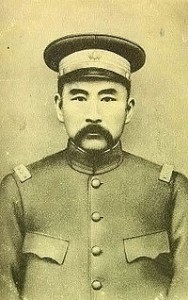 Zhang Xun
Zhang Xun
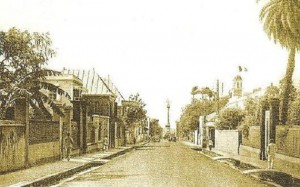 Rue de Paris – Reunion’s capital Saint-Denis, circa 1900
Rue de Paris – Reunion’s capital Saint-Denis, circa 1900
Posted: September 5th, 2014 | No Comments »
Need to update your bookshelves? Come to the RAS Library’s (at Sino British College on Fuxing Road) autumn book sale, this Saturday (6th September) from 2pm to 5pm.
We have spent the summer reorganising the Library and have identified many duplicate copies that we want to sell, so that we can free up space for new acquisitions. The books include hardbacks, paperbacks and coffee table books, both fiction and non fiction. We even have a few children’s books and books in languages other than English or Chinese!
We also have duplicate copies of old magazines and periodicals from Shanghai going back many years and several miscellaneous household items for sale.
All proceeds will go into the RAS fund to boost our collection and make the Library an even better place to read, meet and relax with a good book.
The Library is located on the second floor of the SBC Learning and Resource Centre Building (with the white balcony). As you enter the main gate to the compound it is the first building on your right.

Posted: September 4th, 2014 | 5 Comments »
One more interesting China Rhyming like object from the Tate’s British Folk Art exhibition – the Salamis Serpent Figurehead from 1863. The Salamis Serpent was the figurehead for the wood paddle 2-gun despatch vessel HMS Salamis, launched at Chatham (Kent) in 1863 and broken up at Sheerness in 1883. The figurehead was saved and restored.
The Salamis figurehead was suitable as the ship was designed for eastern waters and almost immediately despatched for China coast duty under Commander Francis Grant Suttie in 1866. Suttie sailed largely in China waters and eventually moved on to sail Navy ships mostly in the Pacific and down to Australia. There is actually a dedication to Suttie in the stained glass at St. Andrews Blackadder Church, St. Andrews Street, North Berwick (see here).
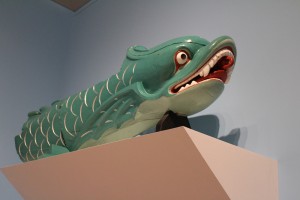
 HMS SALAMIS wooden despatch vessel of the Med fleet b.1863 ended 1883 scrapped at Sheerness. Grand harbour 1888
HMS SALAMIS wooden despatch vessel of the Med fleet b.1863 ended 1883 scrapped at Sheerness. Grand harbour 1888
Posted: September 3rd, 2014 | No Comments »
Managed to catch the last day of the British Folk Art exhibition at the Tate Galley (sorry – but the exhibition is going travelling apparently) and, naturally, a few things ChinaRhyming popped up worth a mention. Today, a patchwork bedcover made, with 4,525 pieces of cloth, by James Williams of Wrexham between 1842 and 1852. The work – made from well over 4,000 separate pieces of cloth – is a combination of Biblical scenes and North Wales landmarks, including the Menai Suspension Bridge and the then-new Cefn viaduct. Additionally the patchwork (and in the nineteenth century patchworks were often the work of men rather than women) reflects the arrival of new goods and ideas in Britain – hence the palm trees and the Chinese pagoda in the upper right corner.

 And what of the Honrary Members?
And what of the Honrary Members? Professor Friedrich Hirth is a new one on me though – A German-American Sinologist who served (under Hart) in the Maritime Customs before becoming Professor Chinese at Columbia University in 1902. He died in Munich in 1927.
Professor Friedrich Hirth is a new one on me though – A German-American Sinologist who served (under Hart) in the Maritime Customs before becoming Professor Chinese at Columbia University in 1902. He died in Munich in 1927.














